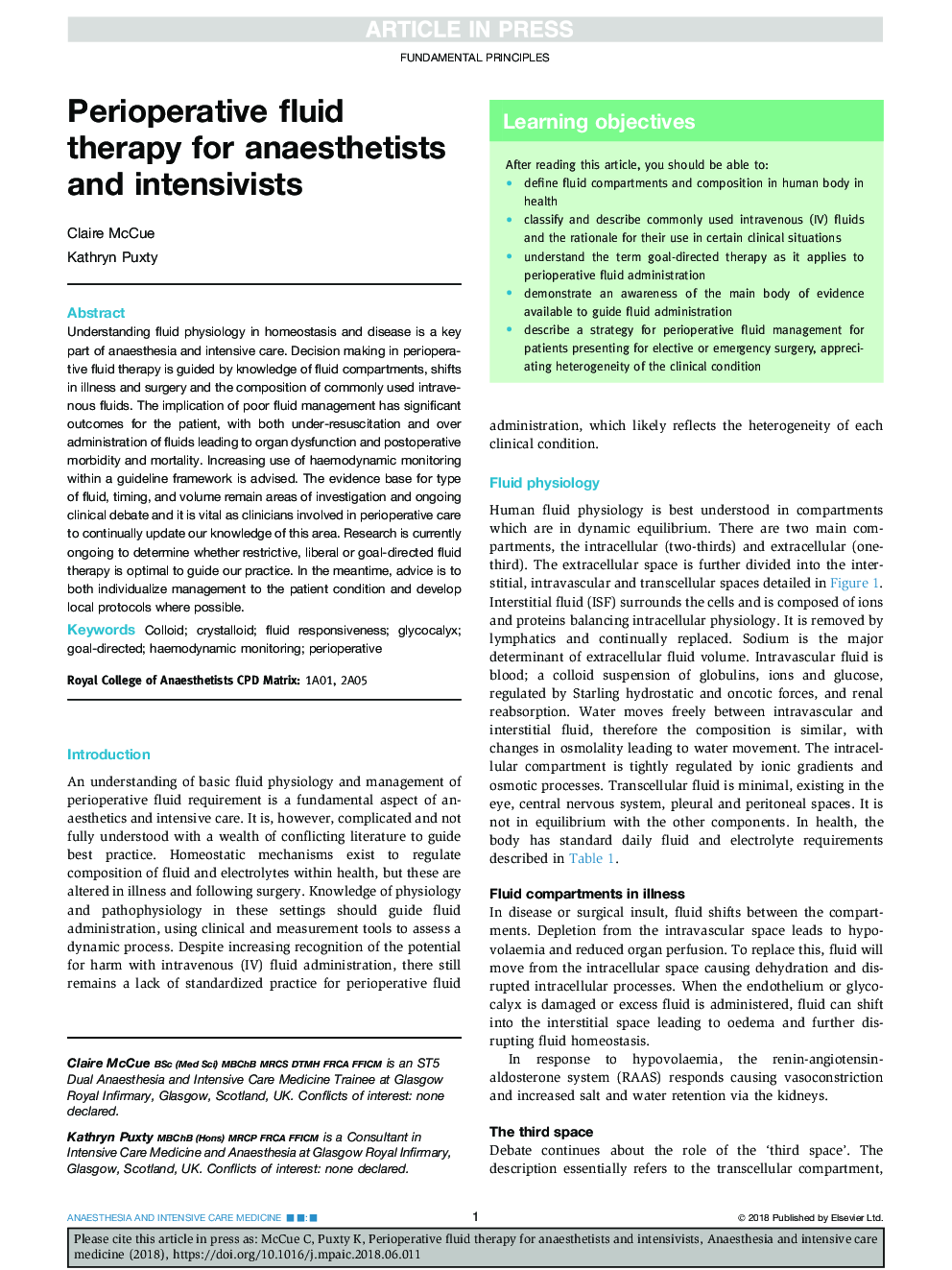| کد مقاله | کد نشریه | سال انتشار | مقاله انگلیسی | نسخه تمام متن |
|---|---|---|---|---|
| 8609808 | 1567107 | 2018 | 4 صفحه PDF | دانلود رایگان |
عنوان انگلیسی مقاله ISI
Perioperative fluid therapy for anaesthetists and intensivists
ترجمه فارسی عنوان
مایع درمانی برای بیهوشی و فشرده سازی
دانلود مقاله + سفارش ترجمه
دانلود مقاله ISI انگلیسی
رایگان برای ایرانیان
کلمات کلیدی
ترجمه چکیده
شناخت فیزیولوژی مایع در بیماری هوموستاز و بیماری، بخش مهمی از بیهوشی و مراقبتهای شدید است. تصمیم گیری در درمان مایع پس از عمل با درک بخش های مایع، تغییر در بیماری و جراحی و ترکیب مایعات داخل وریدی که معمولا مورد استفاده قرار می گیرد هدایت می شود. نتیجه مدیریت مایع فقیر، پیامدهای قابل ملاحظه ای برای بیمار است که هر دویلی از احیاء و تجویز مایعات منجر به اختلال در عملکرد ارگانیک و عوارض و مرگ و میر پس از عمل می شود. افزایش استفاده از نظارت همودینامیک در یک چارچوب راهنما توصیه می شود. شواهد مبنی بر نوع مایع، زمان بندی و حجم، همچنان حوزه تحقیقات و بحث های بالینی در حال انجام است و به عنوان پزشکان درگیر در مراقبت های حمایتی حیاتی است که به طور مداوم دانش ما را در این زمینه به روز می کند. تحقیقات در حال حاضر به منظور تعیین اینکه آیا درمان مایع درمان محدود، لیبرال یا هدف بهینه است برای هدایت عمل ما در حال انجام است. در عین حال، مشاوره به هر دو منحصر به فرد مدیریت به وضعیت بیمار و ایجاد پروتکل های محلی در هر جایی امکان پذیر است.
موضوعات مرتبط
علوم پزشکی و سلامت
پزشکی و دندانپزشکی
بیهوشی و پزشکی درد
چکیده انگلیسی
Understanding fluid physiology in homeostasis and disease is a key part of anaesthesia and intensive care. Decision making in perioperative fluid therapy is guided by knowledge of fluid compartments, shifts in illness and surgery and the composition of commonly used intravenous fluids. The implication of poor fluid management has significant outcomes for the patient, with both under-resuscitation and over administration of fluids leading to organ dysfunction and postoperative morbidity and mortality. Increasing use of haemodynamic monitoring within a guideline framework is advised. The evidence base for type of fluid, timing, and volume remain areas of investigation and ongoing clinical debate and it is vital as clinicians involved in perioperative care to continually update our knowledge of this area. Research is currently ongoing to determine whether restrictive, liberal or goal-directed fluid therapy is optimal to guide our practice. In the meantime, advice is to both individualize management to the patient condition and develop local protocols where possible.
ناشر
Database: Elsevier - ScienceDirect (ساینس دایرکت)
Journal: Anaesthesia & Intensive Care Medicine - Volume 19, Issue 9, September 2018, Pages 461-464
Journal: Anaesthesia & Intensive Care Medicine - Volume 19, Issue 9, September 2018, Pages 461-464
نویسندگان
Claire McCue, Kathryn Puxty,
